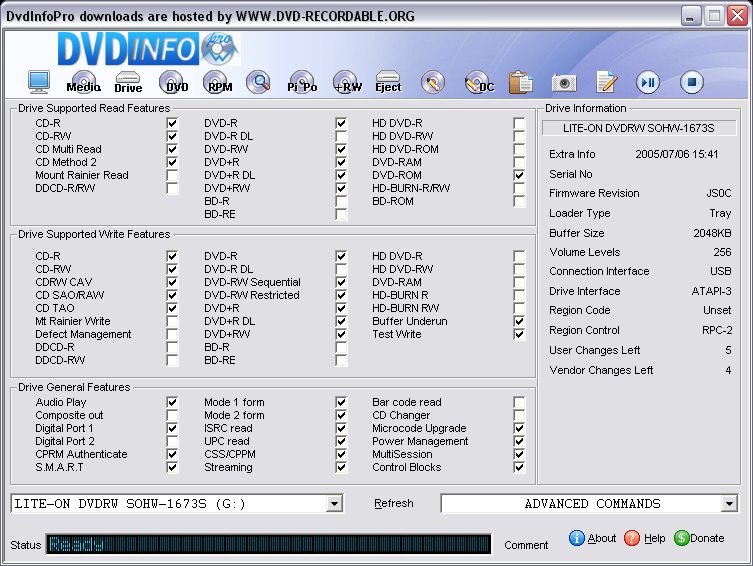| Lite-On EZ DUB |

|
|
First Impressions
The drive is pretty slick. The tray response is quick and it opens fairly quiet. It uses gears for the opening and closing action, whereas many cheaper drives use rubber-bands.
Installation was a breeze; it is autodetected and self-installs perfectly in Windows XP Pro, SP2. It would not be necessary to have any existing DVD/CD drive on the system you wish to use it on because shortly after you plug it in, it is ready to accept the EZ-DUB software installation CD. This is a key idea for LITE-ON because given the nature of this device, it is easy to imagine it traveling amongst various computers to simplify data backups and disc copies.
At full read speed, the drive is a bit noisey. In a normal environment this probably won't be too perceptable or aversive to the average user, but for the movie enthusiasts or silence fanatics you may want to hear it for yourself before plunking down your dough.
The LED blinks consistently green while it is reading a disc, and a solid green while it is burning. Personally I would have liked to see a color variation between reads and burns, just as a little extra precaution to not bump or harass the drive while it’s doing the important work.
DVDInfoPro shows us that this drive has a few features worth noting. First it has 2MB of buffer, and also supports buffer underrun protection. Think of these features as coaster killers, or at the very least, coaster reducers. It also has Smart-Burn technology. This sounds like another buffer-underrun protection scheme, but it is actually much more than that. It helps users by cross-referencing the media being burned with a given writing strategy in its firmware. If the media brand is unknown to the drive, it will run OPC (optimal power calibration) to ensure a quality burn. Lastly, it also checks the quality of a given disc, and if found to be bad, it will evaluate and re-calibrate the laser power during the entire burn to compensate for any disc flaws.

| « Packaging and Contents | Specifications & System Requirements » |



